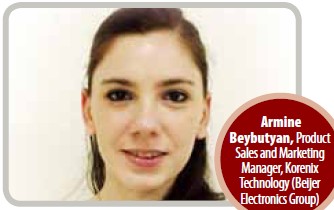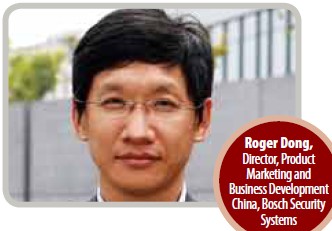Mass transit systems, by nature, are open to everyone. Multiple entrances and exits designed to move large quantities of riders, oftentimes in closed quarters, make metro stations particularly vulnerable. “It is important to understand the operational complexities of the environment when considering the security and safety of passengers and operations,” said Skip Dunnett, Threat, Vulnerability and Risk Consultant at Digital Barriers.
Mass transit systems, by nature, are open to everyone. Multiple entrances and exits designed to move large quantities of riders, oftentimes in closed quarters, make metro stations particularly vulnerable. “It is important to understand the operational complexities of the environment when considering the security and safety of passengers and operations,” said Skip Dunnett, Threat, Vulnerability and Risk Consultant at Digital Barriers.
A security system can only be reliable if it is comprehensive in design, with various inputs and perspectives from all stakeholders. “Multiple parties, including transit authorities, local municipalities and emergency responders, are typically involved throughout the planning and design process for metropolitan subways, making it crucial for a security integrator to communicate closely with each party,” said Jeremy Brecher, VP of Technology Services, Diebold Security.
“A better and more productive approach is to include safety professionals such as health and safety representatives, public safety officers and fire control officers from the onset. While safety systems are not generally designed to provide physical protection, they can offer aspects of security such as threat identification and scene change awareness,” Dunnett added.
Harsh Environments
Subways can be harsh for security systems, in terms of high/low temperatures, heat, constant vibration and dust/debris. Such environmental challenges must be considered throughout all stages of security, life safety and risk mitigation planning and implementation.
“In addition to potentially requiring more frequent maintenance, harsh conditions can also impact the effective operation of security equipment,” Brecher said. “The trains and rail equipment can cause radio frequency/electromagnetic-field interference, for instance, and being underground makes connectivity through wireless technologies and security backhauls difficult as well. This is more the reason to ensure that technology  is selected with careful consideration of all factors.”
is selected with careful consideration of all factors.”
After identifying the risks, integrators must look to install technologies that have been proven to operate effectively in harsh conditions to prevent costly maintenance or even failure. “To ensure reliability, all electrical equipment must have ruggedized design,” said Armine Beybutyan, Product Sales and Marketing Manager, Korenix Technology (A Beijer Electronics Group Company).
Operation versus Security
In transportation, anything adversely affecting passenger flow is regarded as negative. Compared to the aviation sector, there are no constant screenings at metro stations, if there are any, which illustrates the limited resources earmarked for transit authorities. According to USA Today, more than $30 billion has been allocated for aviation security since 9/11, compared to $1.7 billion for subway, passenger rail, cargo rail, bus and ferry security all combined.
“Metro stations are open, and no one can really stop you if you have a load of weapons or explosives,” said Danny Peleg, Director of Market Development for Transportation at Genetec. “Unlike airport security where each passenger has to show up an hour before boarding for screening, the challenge for metros is to ensure security without disrupting operation or service. So you really need to think about security measures that can actually be implemented.”
The constant changes in metro stations also make it difficult to react or respond. “Unlike safety equipment and procedures that are normally seen as nuisances and dictated by regulations, security is an area where risk management can be applied,” Dunnett said. “Although there is usually some form of input into metro security from government departments, this is normally in the form of advice and guidance and relies on the operator to act proactively. In contrast, there is commonly a zero tolerance to unsafe practices. Given that protective security can often require a huge range of differing standards of protection based on the same threat scenario, it is not surprising that mass transportation security managers and planners employ a great deal of risk tolerance when it comes to the implementation of security.”
Effective Coverage
It is often difficult to have effective coverage over an entire station. “You're dealing with a lot of equipment spread over an extensive area,” Brecher said. “Security managers can often achieve better results if they cover the most vulnerable areas, including entryways, critical areas and so on, instead of trying to cover the whole system, which  has the downside of spreading resources too thin.”
has the downside of spreading resources too thin.”
Roger Dong, Director, Product Marketing and Business Development China, Bosch Security Systems, agreed. “No matter how few or how many cameras a system uses, monitoring everything effectively presents a serious challenge. Even observing just a single screen for long periods pushes concentration to the limit; after only 20 minutes, an operator can miss as much as 90 percent of the activity in a scene.”
The best form of defense is thus “attack.” “It is better to identify a number of minor incidents that can be analyzed to give warnings and indications of potential problems than to wait for a major incident to unfold,” Dunnett said. “The proactive tracking of incidents of security interest can allow security staff and managers to detect areas of potential risk and to take preemptive action to reduce vulnerability."
Through coordination and integration, safety systems can be better utilized to support security processes and procedures. “A safety system installed to control overcrowding on the metro platform can be utilized to monitor suspicious activity and thus add to the threat awareness picture. The use of passenger-counting analytics across the surveillance system can highlight not only unsafe overcrowding in ticket halls but can also draw attention to building disquiet in these areas during periods of tension such as the transiting of opposing football supporters,” Dunnett said. “Furthermore, the integration and utilization of safety equipment are not only cost-effective but also provide a subtle way by which security can be introduced without being intrusive. The general public can be uncomfortable with overt surveillance equipment but will feel at ease with the same amount of cameras being present for safety reasons.”
To cope with compounded security and safety threats, a wide range of security and safety systems, including fire alarm, public address and evacuation, video surveillance, intrusion detection and access control, must be in place. “The implemented technology needs to be flexible enough to address different circumstances,” Dong said.